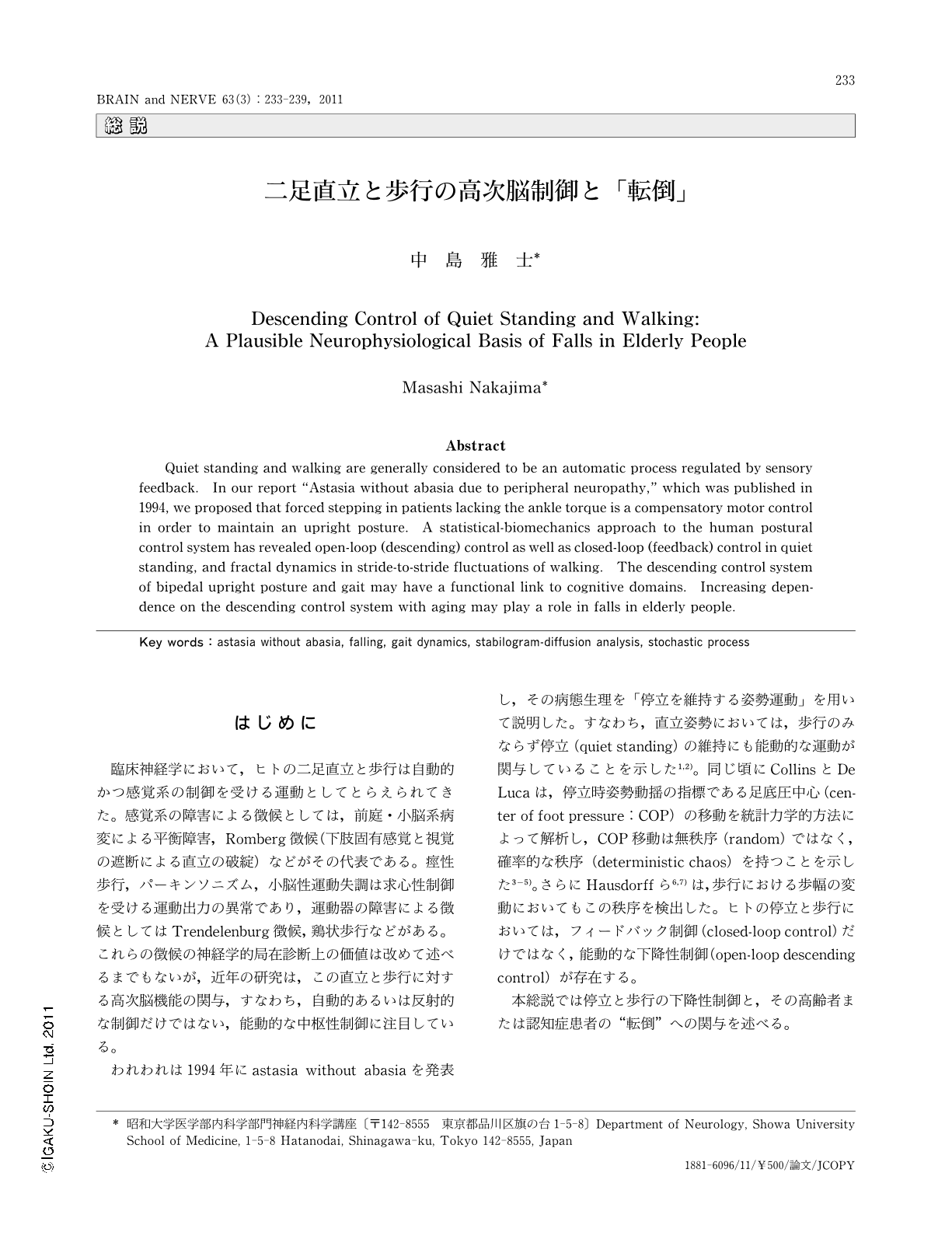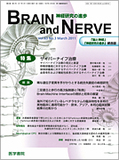Japanese
English
- 有料閲覧
- Abstract 文献概要
- 1ページ目 Look Inside
- 参考文献 Reference
はじめに
臨床神経学において,ヒトの二足直立と歩行は自動的かつ感覚系の制御を受ける運動としてとらえられてきた。感覚系の障害による徴候としては,前庭・小脳系病変による平衡障害,Romberg徴候(下肢固有感覚と視覚の遮断による直立の破綻)などがその代表である。痙性歩行,パーキンソニズム,小脳性運動失調は求心性制御を受ける運動出力の異常であり,運動器の障害による徴候としてはTrendelenburg徴候,鶏状歩行などがある。これらの徴候の神経学的局在診断上の価値は改めて述べるまでもないが,近年の研究は,この直立と歩行に対する高次脳機能の関与,すなわち,自動的あるいは反射的な制御だけではない,能動的な中枢性制御に注目している。
われわれは1994年にastasia without abasiaを発表し,その病態生理を「停立を維持する姿勢運動」を用いて説明した。すなわち,直立姿勢においては,歩行のみならず停立(quiet standing)の維持にも能動的な運動が関与していることを示した1,2)。同じ頃にCollinsとDe Lucaは,停立時姿勢動揺の指標である足底圧中心(center of foot pressure:COP)の移動を統計力学的方法によって解析し,COP移動は無秩序(random)ではなく,確率的な秩序(deterministic chaos)を持つことを示した3-5)。さらにHausdorffら6,7)は,歩行における歩幅の変動においてもこの秩序を検出した。ヒトの停立と歩行においては,フィードバック制御(closed-loop control)だけではなく,能動的な下降性制御(open-loop descending control)が存在する。
本総説では停立と歩行の下降性制御と,その高齢者または認知症患者の“転倒”への関与を述べる。
Abstract
Quiet standing and walking are generally considered to be an automatic process regulated by sensory feedback. In our report "Astasia without abasia due to peripheral neuropathy," which was published in 1994,we proposed that forced stepping in patients lacking the ankle torque is a compensatory motor control in order to maintain an upright posture. A statistical-biomechanics approach to the human postural control system has revealed open-loop (descending) control as well as closed-loop (feedback) control in quiet standing,and fractal dynamics in stride-to-stride fluctuations of walking. The descending control system of bipedal upright posture and gait may have a functional link to cognitive domains. Increasing dependence on the descending control system with aging may play a role in falls in elderly people.

Copyright © 2011, Igaku-Shoin Ltd. All rights reserved.


